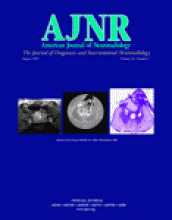The case of posterior column involvement in Miller Fisher syndrome (MFS) reported by Inoue et al (1) is interesting and important. Although central nervous system involvement was reported in MFS, the posterior column lesion due to inflammatory pathogenesis is worthy of debate in terms of differential diagnosis on radiology and prognosis. The main point is whether the posterior column involvement of this patient is a part of MFS or dorsal root ganglion neuronopathy accompanied with MFS. The patient had the triad of ophthalmoplegia, areflexia, and ataxia of MFS, and recovery of ophthalmoplegia is typical of MFS. Recovery of ataxia, however, is poor disproportional to ophthalmoplegia, which is also contradictory to the benign courses of MFS (2). The authors also discussed the debates on lesion localization of ataxia in MFS. We believe that the ataxia of this patient is the manifestation of dorsal root ganglion (DRG) neuronopathy accompanied with MFS incidentally, rather a part of MFS pathogenesis. This may explain why this patient is different to those of benign courses.
Lack of vibratory sensation and no response on somatosensory evoked potential examination on follow-up may not only arise from posterior column lesion. Indeed, areflexia on the background of mild weakness also suggests there may be some peripheral involvement. We think the posterior column damage is a dying back–type degeneration, which might arise from DRG cells following an inflammatory neuronopathy accompanied with MFS, rather than secondary to initial involvement of posterior nerve roots of cauda equina as a part of MFS as the authors imply. The MR imaging abnormality throughout the posterior columns is homogeneous and extends from the level of C1–T12. Retrodegeneration of nerve roots of cauda equina is not a sound explanation for such an extensive lesion. In humans, deep sensory tracts from the lower limbs travel through the fasciculus gracilis and those from the upper limbs and trunk through the fasciculus cuneatus. Thus, we would like to know whether there are some abnormalities in the nerve roots of cervical enlargement at presentation and on follow-up. Cauda equina enhancement is not uncommon in Guillain-Barré syndrome (GBS), but severe ataxia is seldom seen as a consequence. Whether cauda equina enhancement is an early marker of inflammatory pathogenesis of DRG neuronopathy awaits prospective investigation. Homogeneity of hyperintense lesion confined to the spinal posterior column and no apparent abnormalities on T1-weighted images or on gadolinium enhancement study at 5 months after onset is the typical feature of neuronopathy. For the evidence of DRG or peripheral nerve involvement, sensory nerve action potentials of both upper and lower extremities should be reported and discussed in detail. If they were not available, a sural nerve biopsy would retrospectively demonstrate the extent of peripheral nerve involvement.
Posterior column MR imaging abnormalities following DRG degeneration and neuropathy have been previously reported. DRG neuronopathy due to inflammation may occur simply after acute infection or along with other diseases (3). The most commonly reported DRG involvement due to immunocompromise is sensory neuronopathy with Sjögren syndrome, which trigeminal ganglion neuronopathy may accompany (3). The extent of posterior column lesions may reflect the degree of neuronopathy associated with Sjögren syndrome, hence, makes a helpful marker for estimating severity (4). A patient with subacute progressive sensory ataxic neuronopathy after Rickettsia conorii infection was also reported. Histologic studies revealed profound loss of myelinated fibers due to primarily axonal degeneration. The clinical course and the electrophysiologic and histologic findings suggest primary involvement of the dorsal root ganglion (5). Professor Yu-pu Guo, of Beijing Union Hospital (personal communication), once had an acute severe ataxia patient with sensory neuronopathy after diarrhea. MR imaging revealed homogeneous T2-weighted hyperintense lesions of the posterior column. Autopsy revealed DRG degeneration with secondary degeneration of posterior column. The acute course suggests the inflammatory reaction is severe enough to induce more complete degeneration of posterior column than that found in the more chronic courses in Sjogren syndrome. Experimental sensory neuronopathy may be induced with GD1b (6). In this model, axonal degeneration was present in the dorsal column of the spinal cord, in the dorsal roots, and in the sciatic nerve. Some of the nerve cell bodies in the dorsal root ganglia had degenerated and disappeared. Clinically impaired deep sensation was noted in GBS patients with GD1b antibodies (7). In this sense, MFS may overlap with sensory neuronopathy theoretically, because there is cross-reactivity between GQ1b and GD1b (7). Severe ataxia on follow-up, however, is rare even in GBS patients with GD1b antibodies, and there was little evidence of DRG neuronopathy in GBS patients. Thus, we believe ataxia of this patient was caused by DRG neuronopathy accompanied by MFS incidentally.
References
Reply
We thank Drs. Lia and Xie for their valuable comments on our case report. They describe that the ataxia in our patient must have been caused by dorsal root ganglion (DRG) neuropathy incidentally accompanied by Miller Fisher syndrome (MFS). We, however, maintain that MFS can be associated with DRG involvement. Our patient manifested rapidly progressive ocular signs and severe ataxia simultaneously, although the prognosis of his ataxia was worse than for that of other MFS patients. It has recently been suggested that the lesion responsible for the ataxia manifestation in MFS is located in the DRG (1). Also, it has been documented that large neurons in the DRG from MFS patients are positive for anti-GQ1b antibody (2). Thus, it is plausible that MFS could be associated with the DRG lesion attributable to anterograde degeneration of the spinal posterior column, as shown in our patient. Nevertheless, the site of lesions causing ataxia in MFS still remains to be elucidated. Further studies should be necessary to clarify this intriguing issue.
- Copyright © American Society of Neuroradiology












